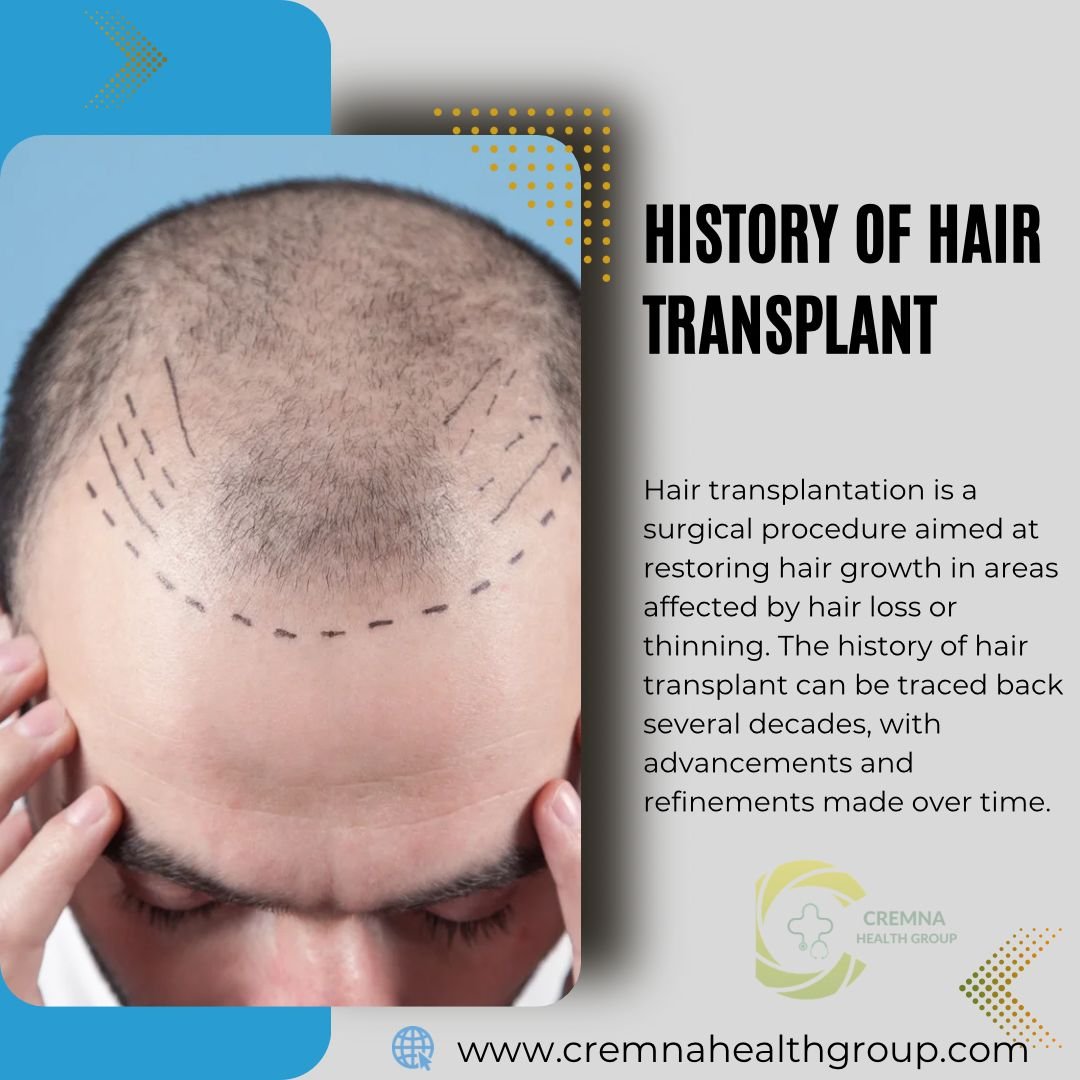Table of Contents

Hair transplantation is a surgical procedure aimed at restoring hair growth in areas affected by hair loss or thinning. The history of hair transplant can be traced back several decades, with advancements and refinements made over time.
Here’s a brief overview of the history of hair transplant:
Early Experimental Attempts (1930s-1940s):
* The earliest recorded attempts at hair transplantation date back to the 1930s and 1940s.
* Japanese dermatologist Dr. Shoji Okuda is credited with performing one of the first successful hair transplant procedures in 1939, using small grafts from the scalp’s hair-bearing areas
Punch Grafting Technique (1950s-1960s)
- In the 1950s, dermatologist Dr. Norman Orentreich introduced the “punch grafting” technique, which involved using round punches to extract small circular grafts containing hair follicles from the donor area.
- These grafts were then transplanted into the recipient area, creating the foundation for modern hair transplant procedures.
Mini-Micrografting and Micrografting (1980s-1990s):
- The 1980s saw further advancements in hair transplantation techniques. Mini-grafts and micro-grafts were introduced, allowing for the transplantation of smaller clusters of hair follicles.
- Mini-grafts typically contained 3-4 hairs, while micro-grafts contained 1-2 hairs. These smaller grafts allowed for more natural-looking results.
Follicular Unit Transplantation (FUT) (1990s-2000s):
- In the 1990s, the Follicular Unit Transplantation (FUT) technique gained popularity. It involved surgically removing a strip of hair-bearing scalp from the donor area and dissecting it into individual follicular units containing 1-4 hairs.
- The follicular units were then transplanted into the recipient area, enabling a more refined and natural hairline.
Follicular Unit Extraction (FUE) and Advancements (2000s-present):
- The 2000s brought significant advancements with the introduction of the Follicular Unit Extraction (FUE) method. FUE involved extracting individual follicular units directly from the donor area without the need for a strip removal.
- FUE allowed for less invasive procedures, faster recovery times, and minimized scarring compared to the FUT technique.
- Over the years, FUE techniques further evolved, including the introduction of robotic-assisted FUE and the development of specialized tools such as micro punches and microneedles.
Today, hair transplantation has become a refined and widely practiced procedure, offering effective solutions for individuals experiencing hair loss or thinning. - Techniques like FUE and DHI have improved the precision, naturalness, and patient experience in hair restoration procedures.
FUT VS FUE
There are two main ways to do hair transplants: one is called follicular unit transplantation (FUT), also known as the strip technique, and the other is follicular unit extraction (FUE).
With FUT, a strip of skin with hair is taken from the donor area and cut into small pieces to transplant. On the other hand, in FUE, individual pieces of hair are taken out one by one using special tools.
Source: https://www.ncbi.nlm.nih.gov/pmc/articles/PMC6795649/
History of Development of Implanter Pens (CHOI PEN)
A tool called the Choi Implanter pen was created in South Korea to make hair transplants more precise and efficient. This pen has different sizes of hollow needles at the end, ranging from 0.5 mm to 1.5 mm. These needles help make the results look natural and also make it easier to take out hair grafts.
The development of implanter pens, such as the Choi Implanter Pen used in the Direct Hair Implantation (DHI) technique, represents a significant advancement in the field of hair transplantation. Implanter pens were designed to address some of the limitations and challenges associated with earlier hair transplant methods, particularly the precision and control of graft placement.
Get in touch
Have other questions?
Email us
Cremnahealthgroup@gmail.com
Call us
+905455419206
Location
10 / Sirinyali Cd. Muratapasa Antalya, Turkey






